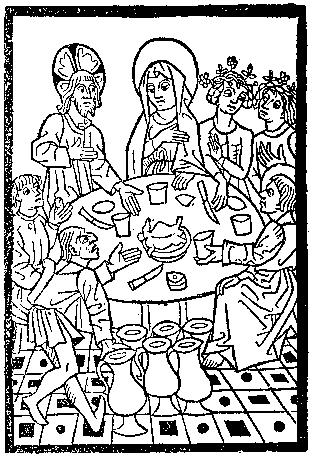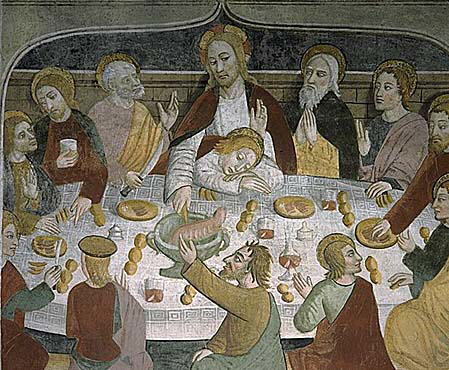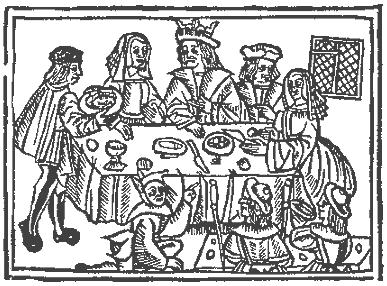The National Museum of the USAF (
Upcoming Home School Days:*
Homeschooling in NJ: Find "A Field Trip List" using labels if it's not on top. Favorites: NJ Shakespeare Theatre student matinees (Othello, A Christmas Carol), Big Dog's Archaeological Perspectives, Dr. Knowles @ The Music Shop, Morris County Parks, public libraries, Novel In One Year; Michael Clay Thompson Grammar; D.I.V.E. Science; & Art of Problem Solving (AoPS) books.
Note: Homeschoolbuyersco-op.com & student subscrip. to mags like The Economist.
Watch the lectures via Live Webcast December 4 and 5th at 10:00 a.m. ET & PT.
On-Demand Webcast: Available starting December 9, 2008
www.biointeractive.org/lectures
Free on DVD - Spring 2009
at Washington Crossing, PA
12/9/2007 - dress rehearsal, The event/village activities will occur from 10:00 am to 4:00 pm, with the crossing time occurring around 1:00 pm. (2nd Sunday of December)
On Christmas day the crossing will occur around 1:00 pm. The Visitor Center opens around 11:00 am and will close at 3:00 pm. The village
houses are not open on this day as all activity will occur at the river. (Christmas Day)
Washington Crossing Historic Park is generally open Tuesday-Saturday from 9:00 am to 5:00 pm & Sunday 12:00 to 5:00 pm. (Hours and tour availability are subject to change without notice.)
Tickets: $5.00 per adult, $4.00 Seniors/AAA, $2.00 ages 6-17, under 6 is free. (Special event fees and school children group fees may vary.) Bring your valid adult ticket from another site within the Pennsylvania Historic and Museum Commission and receive a $1.00 off your admission at Washington Crossing Historic Park.
Guided tours of the McKonkey Ferry Inn section and the Thompson-Neely section occur everyday but Monday and select holidays/special events. Tours begin on the hour at 9:00, 10:00, 11:00, 1:00, 2:00, 3:00, and 4:00. During winter months, tours may conclude earlier in the day due to low light levels in the historic structures.
A tour of the McKonkey Ferry Inn section is approximately one hour in length. Allow 30 minutes to tour the Thompson-Neely House. The Thompson-Neely grist mill is open seasonally for tours. Allow additional time to tour the grist mill.
See, Washington Crossing, Annual Crossing Visit for more details or go here for directions.
Other 2007 Events at Washington Crossing included: -
 |
| Homeschooling's #1 Way to Save |
Inside the Music concerts
Friday, March 14, 2008
Alan Gilbert, conductor
Gerard McBurney, host
R. STRAUSS Ein Heldenleben
Hear and Now concerts
Thursday, January 31, 2008
Lorin Maazel, conductor
Synergy Vocals
Steven Stucky, host
BERIO Sinfonia (World Premiere, 1968: New York Philharmonic Commission)
BRAHMS Symphony No. 4
Thursday, March 13, 2008
Alan Gilbert, conductor
Steven Stucky, host
MARC NEIKRUG Quintessence: Symphony No. 2 (World Premiere: New York Philharmonic Commission)
R. STRAUSS Ein Heidenleben
Friday, April 11, 2008
Leonard Slatkin, conductor
Lang Lang, piano
Steven Stucky, host
TAN DUN Piano Concerto (World Premiere: New York Philharmonic Commission)
STRAVINSKY The Firebird (complete)
* The order form is viewable in Adobe Acrobat®, which can be downloaded for free.
 Students create their own percussion concerto during a Musical Encounters workshop |
$6 per seat. Order Form*: Print it and return it to the Education Department as early as possible; this popular program books quickly.
Option #1: with an Introductory Workshop - students meet at 10:30 for a 45-minute workshop, followed by sitting in on the second half of a Philharmonic rehearsal. Most appropriate for students who may be new to the concert hall or to the orchestra.
Option #2: with a Post-Rehearsal Meeting - students attend an entire rehearsal (beginning at 9:45am) and then meet with a member of the orchestra for a brief question and answer session. Most appropriate for students with some concert-going or musical experience.
Make a Difference Day is a national day for doing something good. It is a day for volunteering, and conducting a community project. This year the day is Saturday, October 27, 2007.
This is sponsored by USA WEEKEND Magazine so they have information and ideas for projects at http://usaweekend.com/diffday/index.html .
Kean University in Union County offers "on school time" shows for 2007 - February 2008, mostly at their Wilkins Theatre. Only some of their shows are listed on the Gryphon Academy Field Trip List. $8 per seat, discount for grouips of 10 or more. Contact their group sales office (908) 737-4351 for reservations. Click for directions to campus.
Their schedule includes:
The Lakota Sioux Indian Dance Theatre, November 19, 2007 at 10 a.m. and 12 p.m.
Wilkins Theatre, Grades 2--6
Mermaid Theatre of Nova Scotia presents Leo Lionni's Swimmy, Frederick and Inch by Inch, November 26, 28-30, 2007 at 10 a.m. and 12 p.m. Wilkins Theatre, Grades Pre-K--3
New Jersey Dance Theatre Ensemble presents The Nutcracker, December 3 and 4, 2007 at 10 a.m. and 12 p.m., Wilkins Theatre, New Jersey Dance Theatre Ensemble returns to Wilkins Theatre with its must-see holiday classic The Nutcracker . This exciting, vibrant and colorful production is based on the tale by E.T.A. Hoffmann and is performed by young dancers for a young audience. In-school master classes and arts and education residencies are available to complement the students' in-theatre experience. Contact NJDTE at 908-232-0114. Grades Pre-K--8
Show - Othello by William Shakespeare, November 16, 2007 at 10 a.m., $8 per seat. University Center Little Theatre, Kean University, Union, NJ, Grades 9-12. Group sales office (908) 737-4351
Show - The Adventures of Flat Stanley, December 7, 2007 at 10 a.m. and 12 p.m.
Wilkins Theatre, Grades: Pre-K--5. $8 per seat. University Center Little Theatre, Kean University, Union, NJ, Group sales office (908) 737-4351
Show - Humbug, December 18 and 19, 2007 at 10 a.m. Wilkins Theatre, $8 per seat. University Center Little Theatre, Kean University, Union, NJ, Group sales office (908) 737-4351. Grades 7--12
Show - Moscow Cats Theatre, January 18, 22 and 23, 2008 at 10 a.m. and 12 p.m. Wilkins Theatre, $8 per seat. University Center Little Theatre, Kean University, Union, NJ, Group sales office (908) 737-4351. Grades Pre-K--6
Show - Kean Dance Theatre, February 1, 2008 at 11 a.m., Wilkins Theatre, $8 per seat. University Center Little Theatre, Kean University, Union, NJ, Group sales office (908) 737-4351. Grades 7--12
For further information and to make reservations, call Kean Stage at 908-737 4350 between 10 a.m. and 5 p.m., Monday through Friday. caption: The Marriage at Cana, from the Spiegel menschlicher Behältnis, Basle 1476. From Gode Cookery
caption: The Marriage at Cana, from the Spiegel menschlicher Behältnis, Basle 1476. From Gode CookeryThe Renaissance was a time of “awakening” and changes and food was not exception. Although Marco Polo is unlikely to have gone to
Before refrigeration everyone was much more aware of what was in season and ate fresh when they could, and dried items out of season according to what was available.
caption: Line illustration and A Last Supper picture from Gode Cookery


Most Europeans were still Catholic and feast/fast days were observed. At one point in the late Middle Ages about half of the days of the year were designated fast days when no meat could be eaten. Of course this was not much of an issue for the poor who could not afford to eat meat as often as every other day! Fish was popular, fresh, dried, and salted, especially in the Lenten season.[2]
Search for Cooking Methods for Vegetables on Gode Cookery's How to cook Renaissance foods for details - but boiling when the water was safe, and eating raw salads were both common. That page also discusses use of water & wine & alcohol, elsewhere the site lists foods to never use for Renaissance cooking like corn, tomatoes, turkey (which had not yet reached them from the New World), rhubarb and bananas (probably know but not used), potatoes, and yams (which traders would bring from Africa). Check out the illustration of a spit from Historic Food.
At Home in Renaissance Italy says “During the Renaissance it was common for meals to have four courses, which could consist of one entrée, two meat courses and one course of fruit or cheese. Meat was expensive and eaten regularly only by the wealthy. Short pasta, which would be boiled, became increasingly popular during the sixteenth century and soon dominated the Italian diet.”
From The Food Timeline
Cuisine of Christopher Columbus
He was born in Genoa where a diet with lots of herbs and salads - but no or few spices and no coffee was common. Read more about cuisine of his Genoa days. Recipes - for his whole life - are here.
Food of the Renaissance from the Virtual Renaissance Team includes "tidbits" and recipes for breads, cheese & eggs, soups, vegetables (did you know the beginning of autumn was the best season for celery?), staples and desserts. They even have the script of a veggie presentation!
Editure's Renaiassance Food Worksheet
[1] Last week I was told that daVinci was responsible for the “modern” spinning wheel, and he was influenced to do this by information on pulleys – from China. I want to check that out.
[2] Salt was a major trade item, probably from at least the time of Viking invasions. I can’t remember when salt flats were created in Europe.
[3] Remember tomatoes were from the
"The Renaissance as it unfolded in
- Geof Purcell, The Archaeological Perspective
(excerpt from private email, September 2006)
1. Introduction and Culture (time line, geography, culture)
(note for parents – The Medicis were a prominent family in the Renaissance – a wealthy family, involved in politics, patrons of the arts, but perhaps not a dynasty that you would want your children to study in detail at this time. I think Machiavelli worked for the Medici. The Renaissance was also known as the “Golden Age of Poison”. This deadly practice helped shape European history and the Catholic Church.)
2. Daily Life (dress, home life, occupations) impacts artifacts that might be found.
By the Renaissance, St. Nicholas was the most popular saint in
3. Religion/Mythology (gods, burial rites, Christianity)
4. Arts and Recreation - Games, Music, Sports, etc.) Games/sports included: Rounders, chess and card games. (lots of pop-ups from this Renaissance Games site)
5. Government, Armies, Class System
6. Language/Writing
Libraries?, Gutenberg, printing press,
7. People (or what do those turtles have to do with this…?)
Genius: Machiavelli, Italian philosopher Giovanni Battista Vico
Scientists:
Galileo Galileo - astronomer and physicist who supported the Copernican theory. (Copernicus was an early scientist who wrote Revolutions of the Heavenly Spheres.)
Johann Gutenburg invented the printing press. He printed the first printed version of the bible.
Artists: Giotto, Leonardo Da Vinci, (Raphael, Michelangelo, Sandro Botticelli (painted the Birth of Venus), Fra Angelico, …)
Architects:
Donato Bramante (1444 –
Filippo Brunelleschi (1377 –
8. Zooming out for a bigger picture -
Please be ready to give a very brief overview of your craft/presentation's importance to the Renaissance Italians (not a thesis, just a brief history). Pretend Big Dog will be there, ready to say, “What is the context?"
A couple of alerts - In the Renaissance people began to question the church; the church was a bit slow in reacting to scientific discoveries, and some priests were very corrupt. Michelangelo did not lay on his back to paint the Sistine Chapel even though some books and sites still say that. Please use appropriate adult supervision if your family builds things or conducting experiments - even if it is from a source listed here. I accept no responsibility for supervising your children!
Click on the link below for the clips from HISTORY.com.
1. Michelangelo Buonarroti, the greatest of the Italian Renaissance artists, is born in the small
| | [play video 51 sec |
2. The ceiling of the Sistine Chapel in
| | [play video 1 min 3 secs] |
3. A look at the Palazzo Vecchio and other great palaces in
| | [play video 3 min 46 secs] |
4. Peter Weller (host) rants about the Renaissance and the birth of Humanism ...
| Engineering an Empire: Peter on Humanism and the Renaissance | | [play video 2 min 40 secs] |
5. Peter Weller (host) visits the Pazzi Chapel, Filippo Brunelleschi's architectural triumph in
| | [play video 3 min 15 secs] |
1. Renaissance background
http://www.wsu.edu:8080/%7Edee/REN/BACK.HTM
3. Leonardo da Vinci Web Quest
http://media.nasaexplores.com/lessons/04-065/5-8_2.pdf
(Victoria & Albert Museum's) At home in Renaissance Italy - listen to music, furnish your own sala, play bingo, …
http://www.twingroves.district96.k12.il.us/renaissance/GeneralFiles/Introduction.html
Art of the Renaissance - Links to support lessons in Renaissance Art, including examples of Renaissance music, art, mapping etc., Scholastic's Internet Field Trip, Annenberg Media's Annenberg Media's Renaissance: Out of the Middle Ages and Renaissance: What inspired this age of balance and order?
Italophiles has 24 depictions of woodcuts from Cesare Vecellio's Renaissance costume book - first printed in 1590.
"General Washington twice chose Morristown due to its strategic location, including proximity to New York City, defensible terrain, important communication routes, access to critical resources, and a supportive community. The park encompasses ground occupied by the army during the vast 1779-80 encampment, and the site of the fortification from the 1777 encampment. The Ford Mansion, where Washington made his headquarters, is an important feature of the park and recalls civilian contributions to the winning of independence."
"The national park consists of four non-contiguous units: Washington’s Headquarters with the Ford Mansion and Headquarters Museum, the Fort Nonsense Unit, the Jockey Hollow Unit, and the New Jersey Brigade Area. The Jockey Hollow Unit includes the Wick house (headquarters of General Arthur St. Clair), five reconstructed soldier huts, and approximately 27 miles of walking trails.Pre-dig Days: Italian Renaissance (for 5 – 12 year olds)
This year we decided to focus on the artists and scientists of the period before the dig. We have found that the more we know, the more we get out of a Dig, although there is lots of be learned if one just walks in too! Here is a possible schedule, of course it would vary with the ages and interests of the people involved.
Bring your own ‘bag’ lunch. Tentative schedule!
1. Brief introduction to the period – perhaps with a time line and black line maps
2. (?) intro to art & artists – by ?
3. daVinci presentation – by child
create a Mona Lisa off your own with a present day person. For ideas:
Maybe discuss Davinci’s Mona Lisa – monochromatic, review shading & tinting? How it is the most copies art piece in the world? Mona Art and Mona kids versions to show after.
Mona Lisa painting info (& timeline), landscape/background
4. Michelangelo presentation – requested
Check out the sonnet Michelangelo wrote about how painful standing on scaffolding and painting the ceiling of the Sistine chapel was
5. Donatello representation – requested
Share additive style sculpture done at home following Tabitha Wards’ Elementary Lesson Plans (distributed in advance) from: http://members.aol.com/TWard64340/Renaissance.htm#Donatello
(Warning – while we like her page, it does repeat a myth about Michelangelo as fact. Despite what C. Heston did in the film, we know that Michelangelo stood to paint the Sistine Chapel, using scaffolding he designed himself. We avoided her “ceiling painting” exercise for didactic reasons.)
6. Other (other artists?, perspective, architecture) Victoria & Alberts has some nice resources on Raphael
7. Renaissance game (if time permits, but we won't be gambling!)
Tentative!
1. Galileo’s work – by ?
Scientific method intro – by child
Display Telescopes made at home and discuss seeing the moon. For ideas, see:
http://amasci.com/amateur/teles.html
I'm disappointed by Home Training Tools' "make a simple telescope" directions, unless you happen to have the right lenses around the house! They sell a kit for $13 with what you need, and individual lenses for a more do-it-yourself approach. I really liked their astrolabe directions - this tool has been around for 1000 years reaching its heyday in 1400-1500.
Activity 1. Re-create Galileo experiments (perhaps acceleration? his experiments with motion?). The group leader may want to consider these links – as well as the space they have and the abilities of their group. Please point out that we don’t really know whether Galileo actually ever dropped cannon balls from the
Discussion 2. “other Renaissance discoveries”
"war, armor an& weapons" - by child
"Occupations in the Renaissance" - by child
compass – new to
printing press – new to
presentation on libraries & books of the time – by child
(may include impact of printing press in general, or on religion and authors)
3. Renaissance game (if time)
 Clipart ETC is an online service of Florida's Educational Technology Clearinghouse and has a 5 images under the category "Renaissance Sculpture". However, to find more, use the search option and look for individual artists, for example: "Donatello" (7 images), "Michelangelo" (3 images).
Clipart ETC is an online service of Florida's Educational Technology Clearinghouse and has a 5 images under the category "Renaissance Sculpture". However, to find more, use the search option and look for individual artists, for example: "Donatello" (7 images), "Michelangelo" (3 images).
Educational Use. A maximum of fifty (50) clipart items may be used in any non-commercial, educational project (report, presentation, display, website, etc.) without special permission. The use of more than fifty clipart items in a single project requires written permission from the Florida Center for Instructional Technology (FCIT) at USF.
Credit. Please credit FCIT whenever a resource is used. If resources from this site are incorporated into a website, a link to http://etc.usf.edu/clipart must be included on your site. If you would like to help others find the Clipart ETC site, you may choose to link to us with one of these banners or buttons instead of a text link. (Here's a man mounted upon a horse from
S. Reinach, Apollo (New York: Charles Scribner's Sons, 1922) via FCIT)